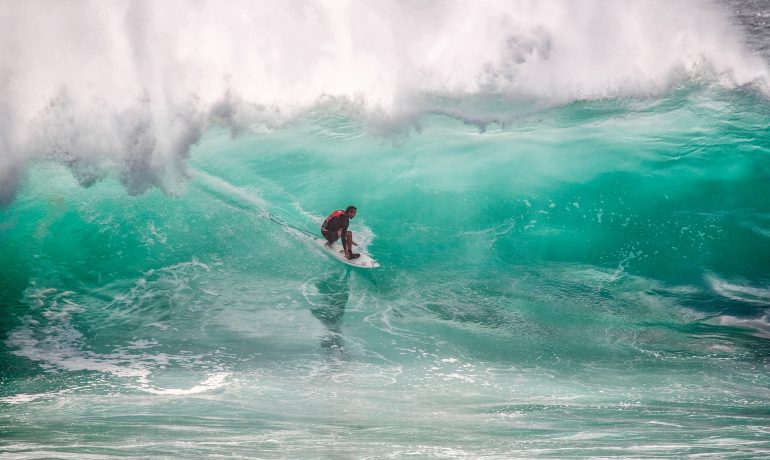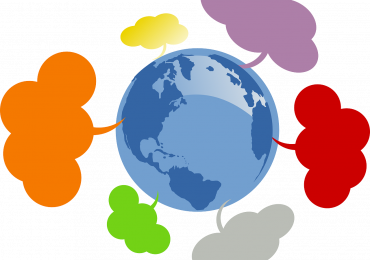The New World Order Changes….
The World Economic Forum has reconvened in Davos this week, after the Covid-19 pandemic led to its postponement in 2021, and a shorter meeting in 2022, which Russia did not attend. Once a key date in the calendar, there are questions over the relevance of the Davos event in a multi-polar and increasingly fractious world.
However, Davos does see the publication of the WEF’s 18th Global Risks Report.
As ever, the report provides a useful opportunity to try to see the world in a global, strategic context. But this year’s report is also alarming. And perhaps what it doesn’t quite say is even more alarming than what it does.
“Polycrisis” is the key word. The report shows how the effects of different risk factors triggers reactions in other parts of the world, and other sectors. Between 2019 and 2022 we saw the impact of the pandemic on global trade. It distracted from efforts to deal with existing global problems, and highlighted other problems, for example unequal access to vaccines and other essential supplies. The effects rumble on. Data released this week show that China’s economy grew by 3% in 2022 – which would be enviable for a post-industrial Western economy, but is the lowest GDP growth since 1976, except for 2020, when the pandemic began.
The Russian invasion of Ukraine has had “polycritical” impacts that have been as far-reaching if not more so: precipitating steep rises in the cost of energy and other natural resources, and rises in the price of staple foods, coupled with a loss of availability. And it has led to a further polarisation of diplomatic relations between regions, or individual countries – in particular, the West versus Russia and its allies. The impacts of polycrises affect most heavily the world’s poorest, least resilient in the face of shortages of food and other essential commodities, and with the worst access to health and education.
The research for of the Risk Report highlights a prevailing air of gloom. It states that 80% of respondents anticipate “consistent volatility” in the future – a far cry from the New World Order of the post-Cold War Age, as previously noted in our November blog, which reported on the discussion of the same issues at ESPAS (The European Strategy & Policy Analysis System).
The Risks
The Report sets out the key risks over the next two years and ten years, up to 2033. There is consistency over the two periods, although the order of severity changes in the two lists. The lists are as follows:
![]()
The short-term list has a mix of environmental (green), economic (blue) and social (red) risks at its head, whereas the longer term has four environmental risks at its head.
The World in Oak
In 2021, the European Commission’s Directorate-General for Research and Innovation published a strategic foresight report. The Report included four scenarios for the World in 2040, and applied those scenarios to ten Regions, encompassing most of the rest of the world. The report is available at the link here.
We wrote a series of blogs setting out the highlights of the scenario exercise, which we led as a workstream within the wider Foresight Project. An overview is at the link here.
The four global scenarios are presented in graphic form below.
![]()
In developing the scenarios, we discussed them with delegates from around the world, as well as the Commission itself. Overwhelmingly the consensus was that all the Regions were either in Oak, or very close to it: resisting change, preferring to cling to “business as usual”, and exclusionary. The WEF Risk Report confirms this.
This helps to explain the emergence of polycrises. The maintenance of a stable global system of governance, finance and trade, and the management of global challenges, such as global warming, is best served by global co-operation. The world in Oak runs counter to this. Countries and/or blocs pursue their own interests; there is distrust between them, and sometimes outright hostility.
Is there any hope?
If this sounds gloomy, that is because the challenges ahead really are daunting. This week, scientists from around the world warned that the continuing rise in global temperatures has added to the risk of unprecedented temperatures, possibly exceeding 1.5 degrees C in 2024 – i.e. within the two-year “short term” period in the WEF Risks Report – and at a time, according to the report, when other global risks will compete for attention and for the resources to mitigate them. How long can the climate wait for us to catch up?
Such a serious situation demands global resolve and urgency. With the war in Ukraine likely to continue for now, and with continuing tensions between Russia and the USA, the sort of global co-operation and innovation envisaged in the “Bamboo” scenario seems as mythical as a herd of unicorns.
But despair, like doing nothing, is not an option. There are “weak signals” of positive action on which to build. Recent personnel changes in China have signalled at least the hope of greater collaboration – although we do not yet know the American response.
The planned creation of the CPTPP (Comprehensive and Progressive Agreement for Trans-Pacific Partnership) may become a vehicle for wider co-operation in the Pacific Region. Its members include:
- Japan, Vietnam, Malaysia, Singapore, Canada, Mexico, Peru, Chile, Australia, New Zealand and Brunei; the UK is in the final stages of accession.
- Other candidates that have applied, or signalled a wish to join, include Taiwan, South Korea, Thailand, Uruguay, Colombia, Ecuador and Costa Rica.
- China has indicated it would like to join, although there are practical hurdles to be overcome, in particular questions about China’s approach to intellectual property, and towards its own minority populations.
Even without China, the current membership accounts for some 16% of global GDP. It could be an important player as the World seeks to evolve from polycrises (and Oak) towards a more constructive and collaborative future. It will not have the heft of a superpower, but it will carry influence, and be able to lead by example. The US position on CPTPP is unclear. It was strongly supported by Barack Obama during his Presidency, but Donald Trump showed no support. Other initiatives, such as the African Continental Free Trade Area (AfCFTA) will help small and medium sized states to work together for better terms of international trade.
Climate too will drive us. Even if we ignore it, its impacts will not reciprocate, and they will increase demand (even among countries that have “dragged their feet”) for action to reduce the risks and mitigate the harms already done. Moreover, the spike in energy prices, and the supply constraints caused by the war in Ukraine should give the rest of the world a strong stimulus to reduce its reliance on fossil fuels. In the absence of sustained, global action at present, we can but hope.
Written by David Lye, SAMI Fellow
The views expressed are those of the author(s) and not necessarily of SAMI Consulting.
Achieve more by understanding what the future may bring. We bring skills developed over thirty years of international and national projects to create actionable, transformative strategy. Futures, foresight and scenario planning to make robust decisions in uncertain times. Find out more at www.samiconsulting.co.uk.
If you enjoyed this blog from SAMI Consulting, the home of scenario planning, please sign up for our monthly newsletter at newreader@samiconsulting.co.uk and/or browse our website at https://www.samiconsulting.co.uk



[…] recent blog looked at the emerging concept of “polycrisis” – how in a polynodal world, different problems collided, often with the effect of amplifying […]